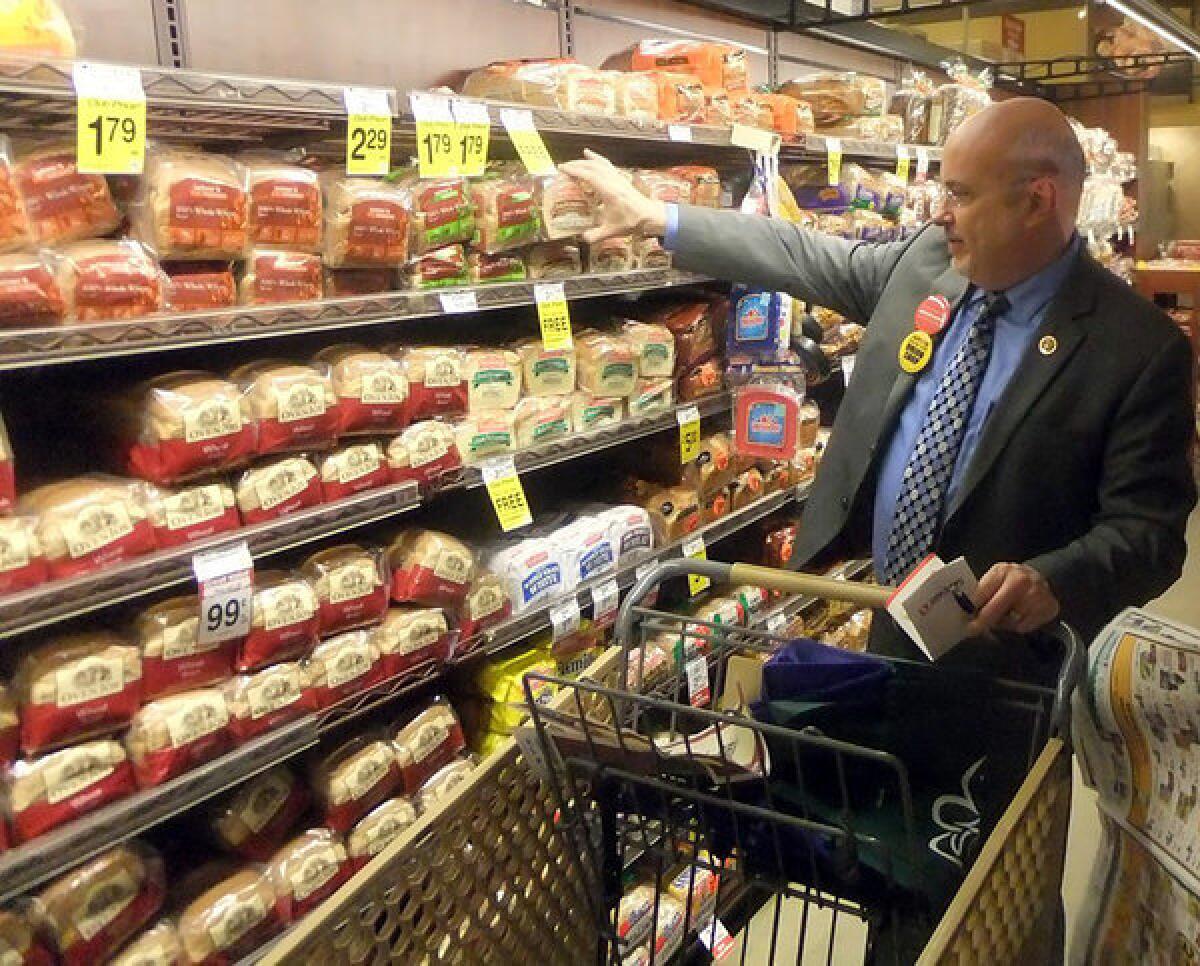Food stamps: Congress glimpses into the meaning of $4.50 a day

- Share via
Beginning today, nearly 30 members of Congress will get a small taste of what it’s like to rely on food stamps. Those calling for deeper cuts can rest assured though; this will come at no cost to the federal government.
The group of House Democrats will voluntarily live off a budget of $4.50 per day, the average Supplemental Nutrition Assistance Program benefit (somewhere between the price of a Starbucks latte and a Cronut). Their pledge is part of the SNAP Challenge, which is protesting a farm bill poised to make significant cuts to the program.
The Senate’s version of the bill, which cleared the chamber on Monday, calls for $4.1 billion in cuts over a 10-year period, but that’s nothing compared with the $20 billion in cuts awaiting in the House bill.
Some will be taking the challenge for a week and some will be taking it for just a few days. Regardless, the actions of this group are laudable.
The Wall Street Journal reported in March that 47 million people are on food stamps (15%) with even higher shares in many states (Mississippi, Oregon, Louisiana and Tennessee all have rates above 20%, as does the District of Columbia).
The House cuts to food stamps would be significant. Some effects include slashing no less than 2 million low-income people from the food stamp program and placing in jeopardy 210,000 school meals for children in low-income families, according to the Center on Budget and Policy Priorities.
One might argue that the SNAP Challenge is the type of meaningless protest that renders no direct results except to serve as a public relations boost for those participating. In this case, though, legislators ought to seek media attention in any form they can. And hopefully their colleagues (especially those not participating) will take note.
Perhaps there are ways to trim SNAP and make it more efficient. But cutting $20 billion seems awfully counterproductive for a program that simply provides a fundamental necessity to millions of Americans. After all, the House only proposed cutting a still absurd $16.5 billion last year.
It’s important for legislators to understand where their money goes and, accordingly, what it means when a program is cut. And, in this instance, they need not look farther than their local grocery store.
ALSO:
McManus: Head-in-the-sand Congress
NSA leaker Edward Snowden: He’s no Daniel Ellsberg
More to Read
A cure for the common opinion
Get thought-provoking perspectives with our weekly newsletter.
You may occasionally receive promotional content from the Los Angeles Times.









